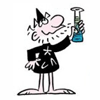Eric's Autos: Reviewing the 2016 Hyundai Tucson
UNDER THE HOOD
The Tucson is among a dwindling cohort of smallish crossovers that's available with more than just one engine. And its base engine isn't weak - and you can pair it with all-wheel-drive.
It's not uncommon among crossovers where a base and optional engine are available that the base engine is only available with FWD. And not just to up-sell you, either. Usually in such cases, the base engine is a weak engine. It has marginal power in the FWD application. Adding AWD to the equation kills the performance (such as it is) as well as the economy. That's not the case here.
The Tucson's base engine (SE trims) is a 2.0 liter four that makes 164 hp. This is not a little bit stronger than both the Honda HR-V's standard (and only available) 1.8 liter, 141 hp engine and the Mazda CX-3's standard (and also only-available) 2.0 liter, 146 hp engine and not that far behind the Honda CR-V's standard 2.4 liter, 185 hp engine. You can pair the Tucson's 2.0 engine with either FWD or AWD, too.
Unfortunately, you cannot get a manual transmission (as you can in the HR-V and in theEuropean version of the Tucson ) and while the gas mileage is not bad - 23 city, 31 highway with FWD; 21 city, 26 highway with AWD - it's not nearly as good as the HR-V's (25 city, 34 highway with the six-speed manual and 28 city/35 highway with the optional CVT automatic) or the CX-3's 29 city/35 highway (27/32 with AWD).
Acceleration, though, is competitive with the HR-V and the CX-3 and also the CR-V. Better, actually, than the arguably under-powered (for its size and weight) CR-V, which needs close to 9 seconds to get 60. The 2.0/FWD Tucson is safely in the high eights.
Eco, Sport and Limited trims come standard with a turbocharged 1.6 liter engine that makes 175 hp and 195 ft.-lbs. of torque (as compared with the 2.0 engine's 151 ft.-lbs. of torque). This is a gutsy little engine - with a lot more guts (and torque) than the Honda or the Mazda or pretty much any other comparably priced (and sized) crossover offers right now.
Hyundai pairs this engine with a seven-speed automated manual - a transmission type that as recently as five years ago was exclusive to very high-end (and high-performance) cars. The box combines the efficiency and performance advantages of a manual transmission with the ease of operation of an automatic. It can change gears more quickly (and with always spot-on timing) than a human driver can - without the conventional automatic's small but significant power (and mileage) losses vs. a manual transmission.
This combo delivers best-in-class acceleration: Zero to 60 in about 7.4-7.5 seconds, depending on whether you select FWD or AWD.
A Nissan Juke is comparably quick - thanks to its comparably powerful (and also turbocharged) 1.6 liter (188 hp) engine. But the Juke isn't really a crossover… it's a Juke. It has about a third the cargo capacity behind its second row (just 10.5 cubic feet vs. 31 cubes for the Hyundai) and about half the total capacity with its second row folded down (35.9 vs. 61.9).
...continued






